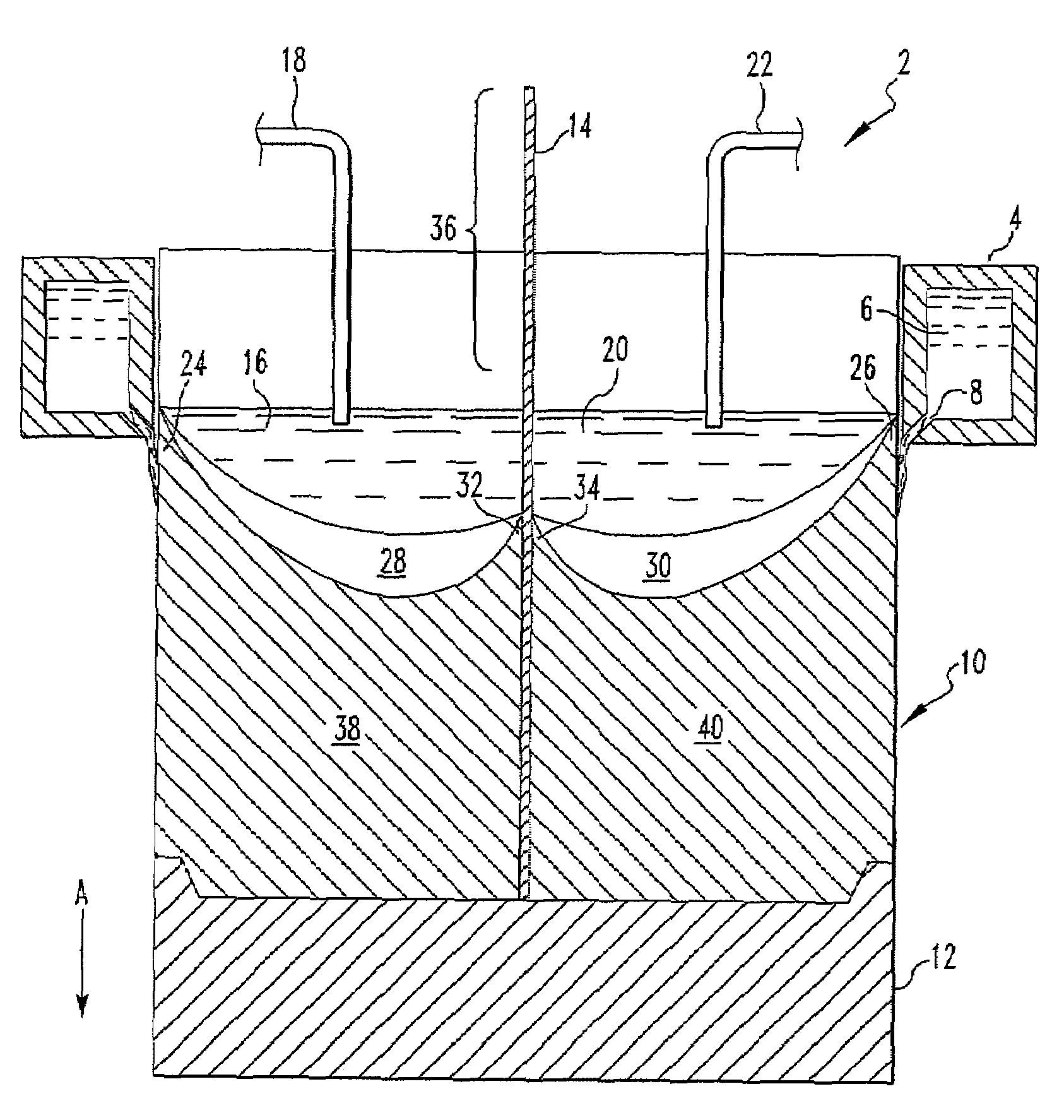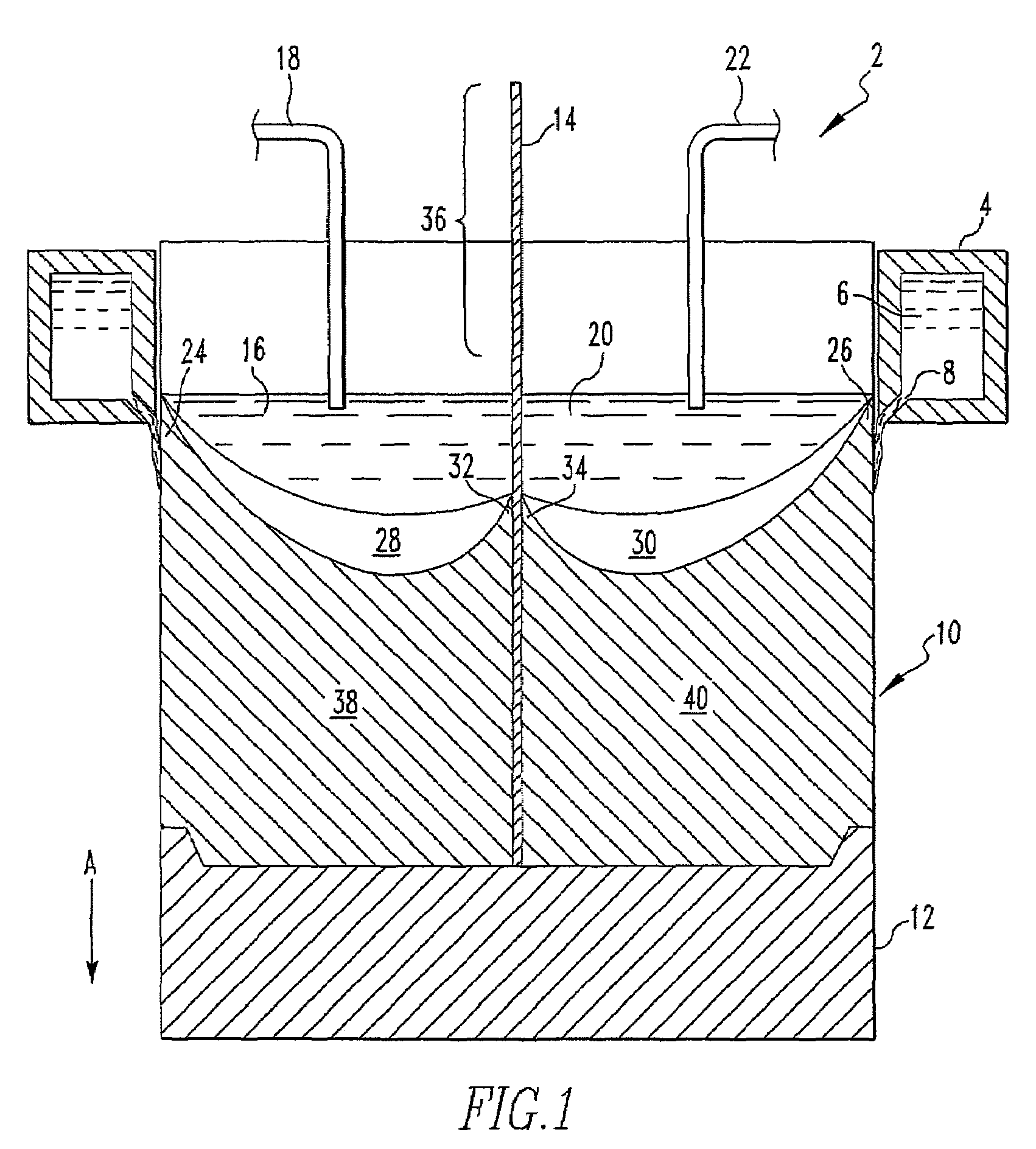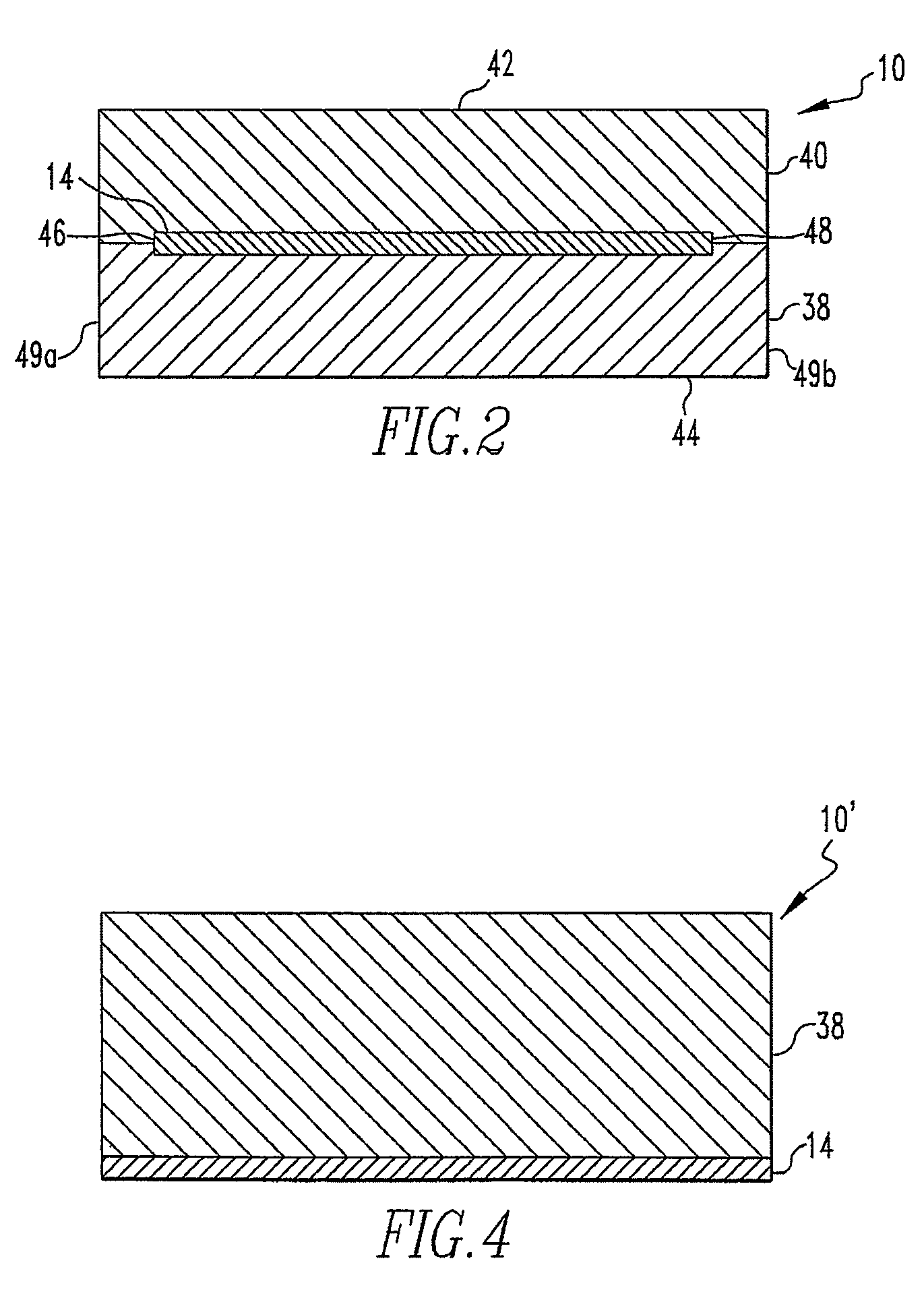Simultaneous multi-alloy casting
a multi-alloy, simultaneous casting technology, applied in the direction of soldering apparatus, manufacturing tools, semiconductor/solid-state device details, etc., can solve the problems of increasing the cost of the final cladding product, the thickness of the cladding produced via roll bonding is generally limited to a maximum of about 35% of the total sheet thickness, and the roll bonding can be extremely difficul
- Summary
- Abstract
- Description
- Claims
- Application Information
AI Technical Summary
Benefits of technology
Problems solved by technology
Method used
Image
Examples
examples 1-3
[0053]In each of Examples 1-3, a sheet of AA 1350 (20 inches wide, 0.375 inch thick, and 24 inches long) was positioned in the center of 12 inch×22 inch mold spanning the width with a gap of about 1 inch between the edge of the sheet and the mold walls. In each Example, a melt A of the alloy listed in Table 1 was poured into the mold on one side of the sheet and a melt B of the alloy B listed in Table 1 was poured into the mold on the other side of the sheet. In Example 3, flux was applied to the side of the sheet which contacted melt A. The metals were cast on opposing sides of the sheet while the bottom block with sheet seated thereon was lowered at a rate of 2.75 inches per minute. A 12 inch×22 inch×about 42 inch ingot having sheet of AA 1350 bonded between a layer of alloy A and a layer of alloy B was produced.
[0054]
TABLE 1Melt AMelt BExam-AATemp.Divider SheetAATemp.pleAlloy(° C.)AA alloyalloy(° C.)13003671*1350 7051**66723003664 + / − 313503005679 + / − 333003663 + / − 51350 with flu...
PUM
| Property | Measurement | Unit |
|---|---|---|
| solidus temperature | aaaaa | aaaaa |
| temperature | aaaaa | aaaaa |
| size | aaaaa | aaaaa |
Abstract
Description
Claims
Application Information
 Login to View More
Login to View More - R&D
- Intellectual Property
- Life Sciences
- Materials
- Tech Scout
- Unparalleled Data Quality
- Higher Quality Content
- 60% Fewer Hallucinations
Browse by: Latest US Patents, China's latest patents, Technical Efficacy Thesaurus, Application Domain, Technology Topic, Popular Technical Reports.
© 2025 PatSnap. All rights reserved.Legal|Privacy policy|Modern Slavery Act Transparency Statement|Sitemap|About US| Contact US: help@patsnap.com



